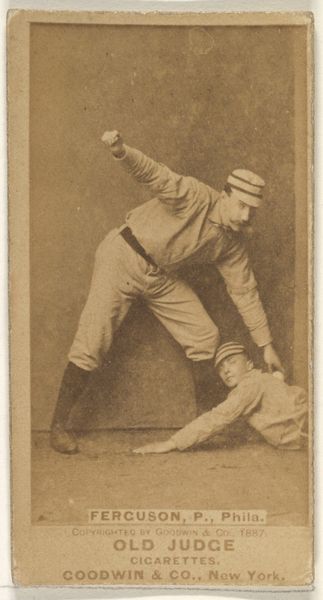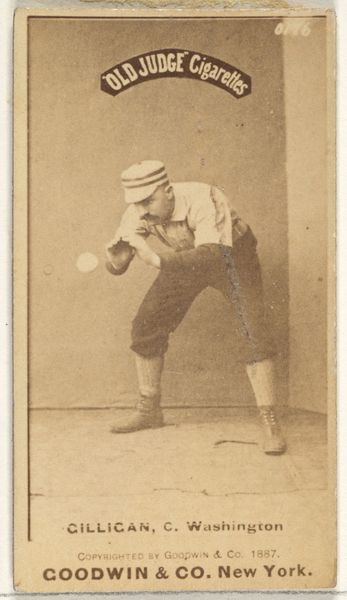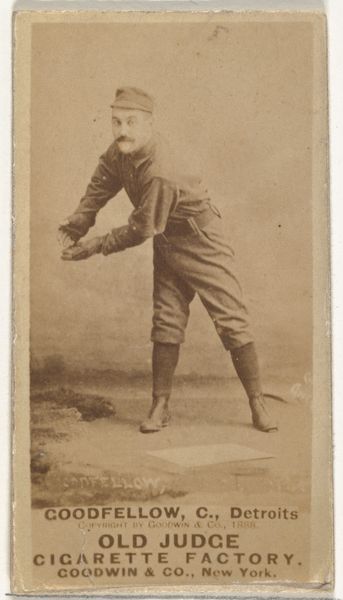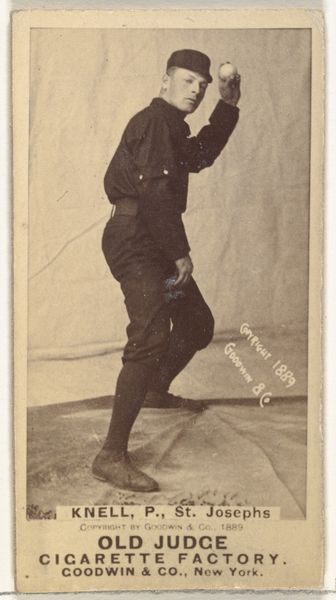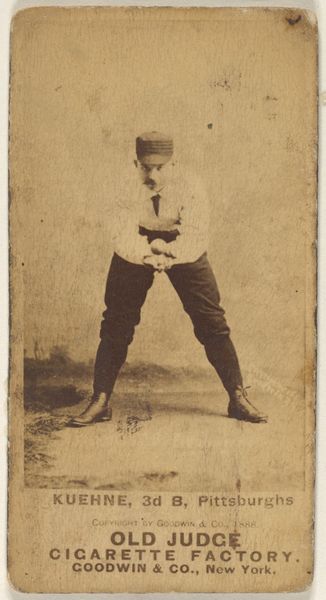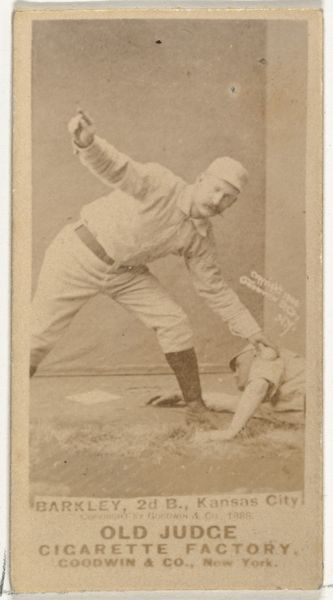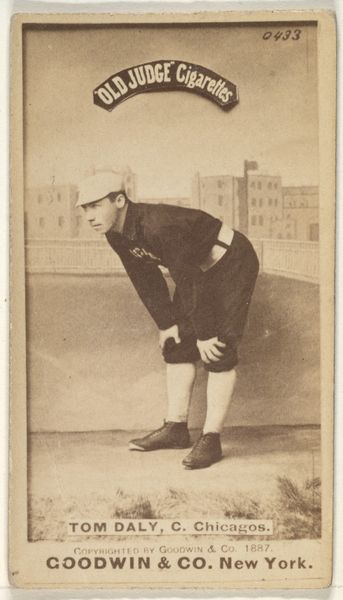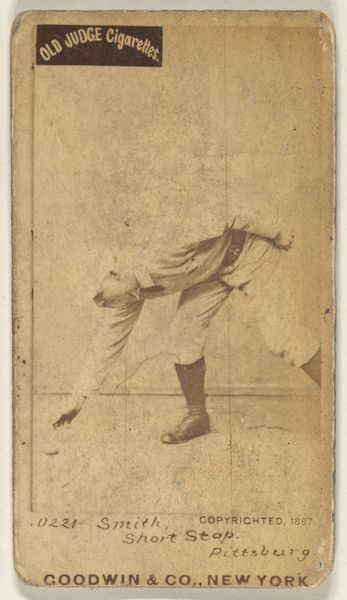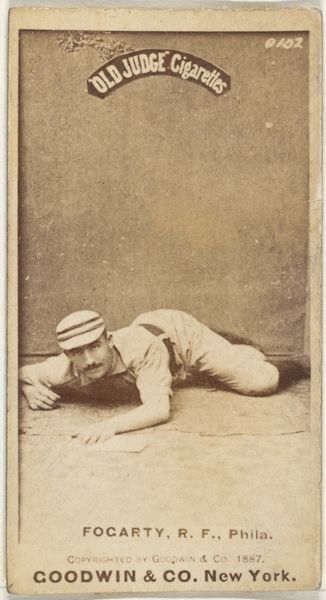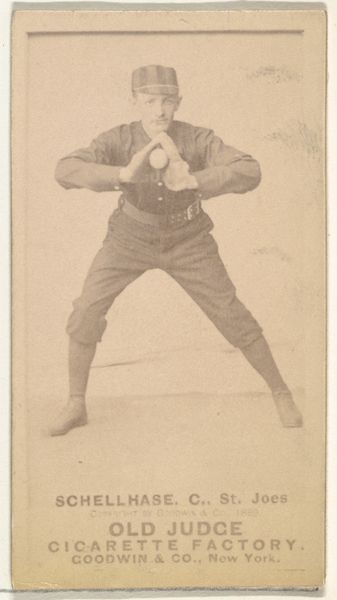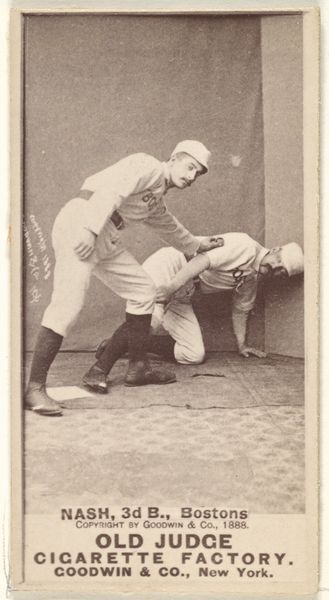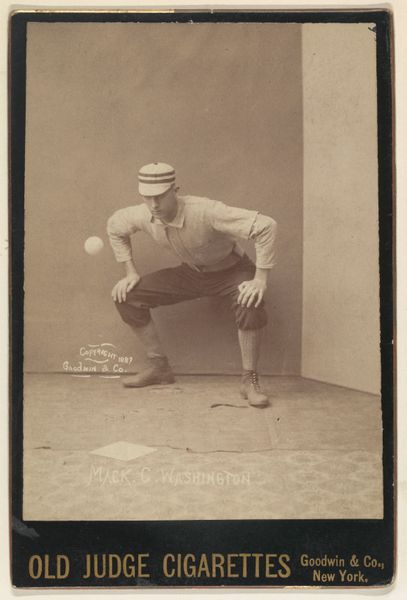
Charles J. "Charlie" Ferguson, Pitcher, Philadelphia, from the Old Judge series (N172) for Old Judge Cigarettes 1887
0:00
0:00
print, photography
#
portrait
# print
#
baseball
#
photography
#
19th century
#
men
#
genre-painting
#
athlete
#
realism
Dimensions: sheet: 2 11/16 x 1 3/8 in. (6.9 x 3.5 cm)
Copyright: Public Domain
Curator: Ah, this sepia-toned image evokes such a bygone era. This is a baseball card, "Charles J. 'Charlie' Ferguson, Pitcher, Philadelphia," from the Old Judge series, created around 1887. It’s a photographic print, produced by Goodwin & Company. Editor: Immediately, I'm struck by the rather awkward pose. It's staged, of course, but the sharp angles and the strained postures of the figures create a curious sense of tension. It's definitely not capturing the dynamism one associates with baseball. Curator: Indeed. Baseball cards of this period were meant to idealize these figures, to grant them a sort of immortality. Ferguson's legacy has arguably been achieved here, at least visually. He tragically died young. Here we witness the myth-making through imagery. The card served as an emblem of his renown and of youth and vitality itself—all the more poignant considering his short life. Editor: Semiotically speaking, it's fascinating how much the image depends on context. Without the "Old Judge Cigarettes" and knowing that baseball cards of the late 19th century were collectible ephemera packaged with cigarettes, this portrait would come off completely differently. As is, it's more a meditation on labor and its visual commodification. I cannot help but find that a somber thing. Curator: You bring up a good point. These weren't just images of athletes; they were essentially advertisements, reinforcing the cultural cachet of baseball and the burgeoning cult of celebrity, with tobacco deeply entangled. It makes one consider the power of even such simple photographs to shape desires and associations. The man is a metaphor for consumption of both baseball as sport and cigarettes. Editor: The monochrome palette really emphasizes the formal, almost stoic arrangement of forms. And while the pose feels somewhat unnatural, the play of light and shadow models the body’s plasticity while creating depth and interest. There’s also the subtle grain of the photograph, grounding the idealized image. Curator: This piece is charged with symbolic weight beyond just baseball itself, reflecting the era's aspirations and anxieties, frozen in time and reproduced. It’s quite small when you see the actual artifact too, roughly a little less than 3 inches wide and under 3 high, so to encounter them offers a curious sense of encountering some ancient, important object. Editor: It’s definitely given me a new way of considering both photographic portraiture and the history of promotional art. A curious and complex visual object for a baseball card, wouldn’t you agree?
Comments
No comments
Be the first to comment and join the conversation on the ultimate creative platform.
